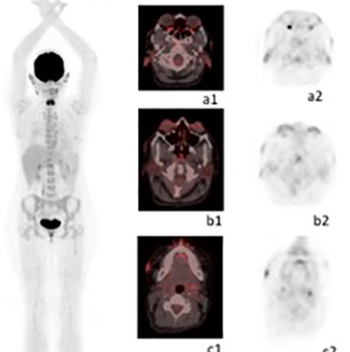Keywords
Rosai–Dorfman–Destombes disease, Rosai–Dorfman disease, relapsing polychondritis, MAPK/ERK pathway, cobimetinib
Abstract
Rosai-Dorfman-Destombes disease (RDD) or sinus histiocytosis with massive lymphadenopathy is a rare non-Langerhans cell histiocytosis of unknown cause. The disease often manifests as bilateral painless cervical lymphadenopathy associated with systemic symptoms such as fever and weight loss. Extranodal disease is also frequent and can involve any organ, mostly skin, nasal cavity, bone, and retro-orbital tissue. Swelling of cartilaginous tissues such as ear helix or laryngeal structures may mimic the entity known as relapsing polychondritis. Although spontaneous remission is the most expected evolution, some cases require systemic treatment with prednisone, methotrexate or cytotoxic agents, with variable success rates. In this respect, since somatic variants in genes involved in the mitogen-activated protein kinase (MAPK) pathway have been observed to play a pathogenic role in RDD, the use of therapies targeting these pathogenic variants seems to be a reasonable strategy. Here we present a case of RDD with extensive extranodal involvement that showed a rapid and complete response to the MEK inhibitor cobimetinib
References

Views: 683
HTML downloads: 129
PDF downloads: 398
Published:
2022-02-04
Issue:
2022: Vol 9 No 2
(view)










